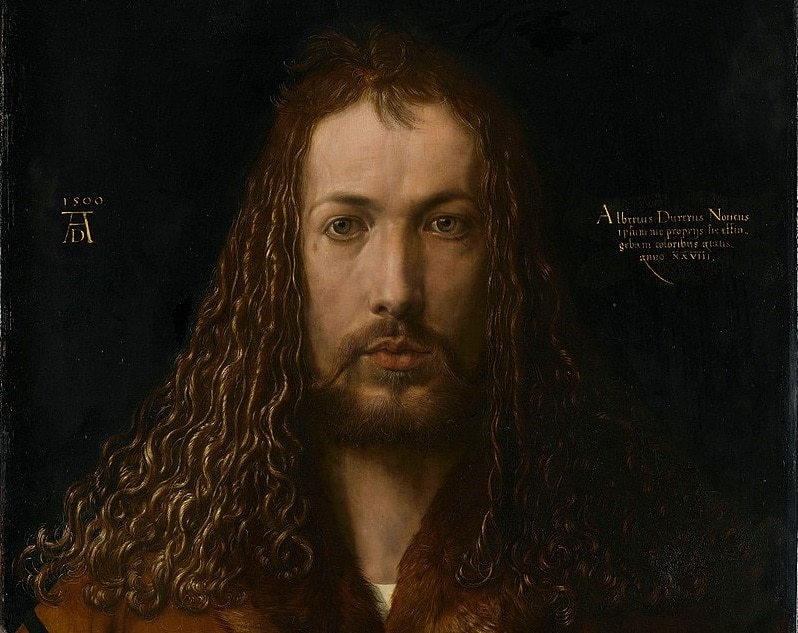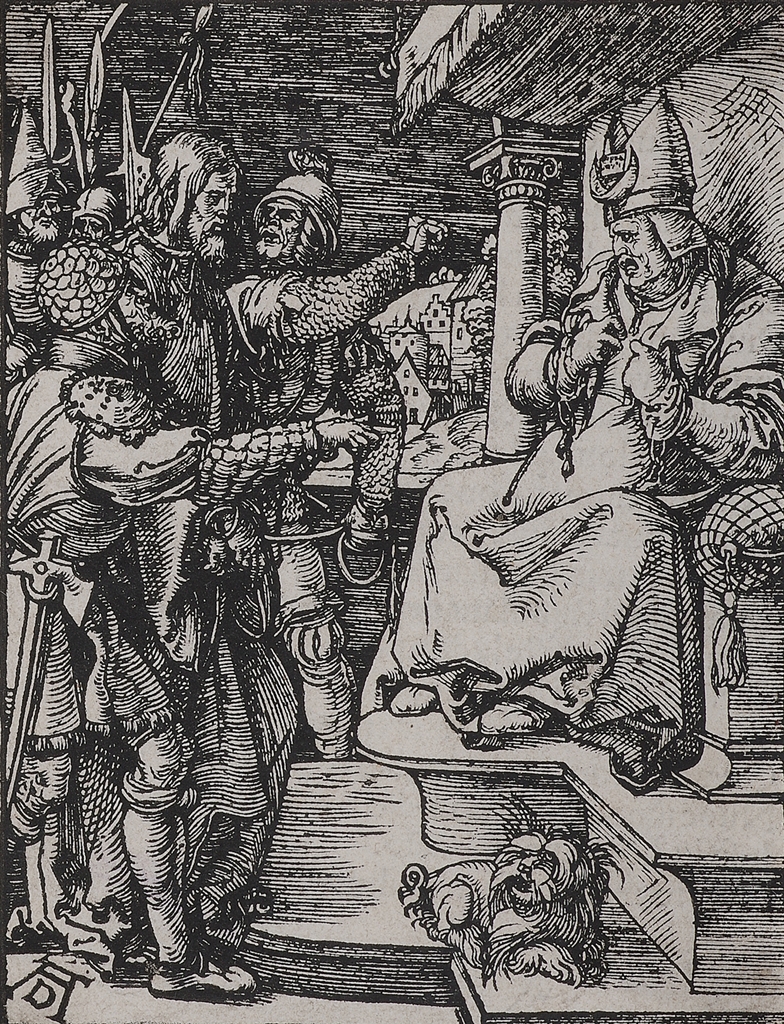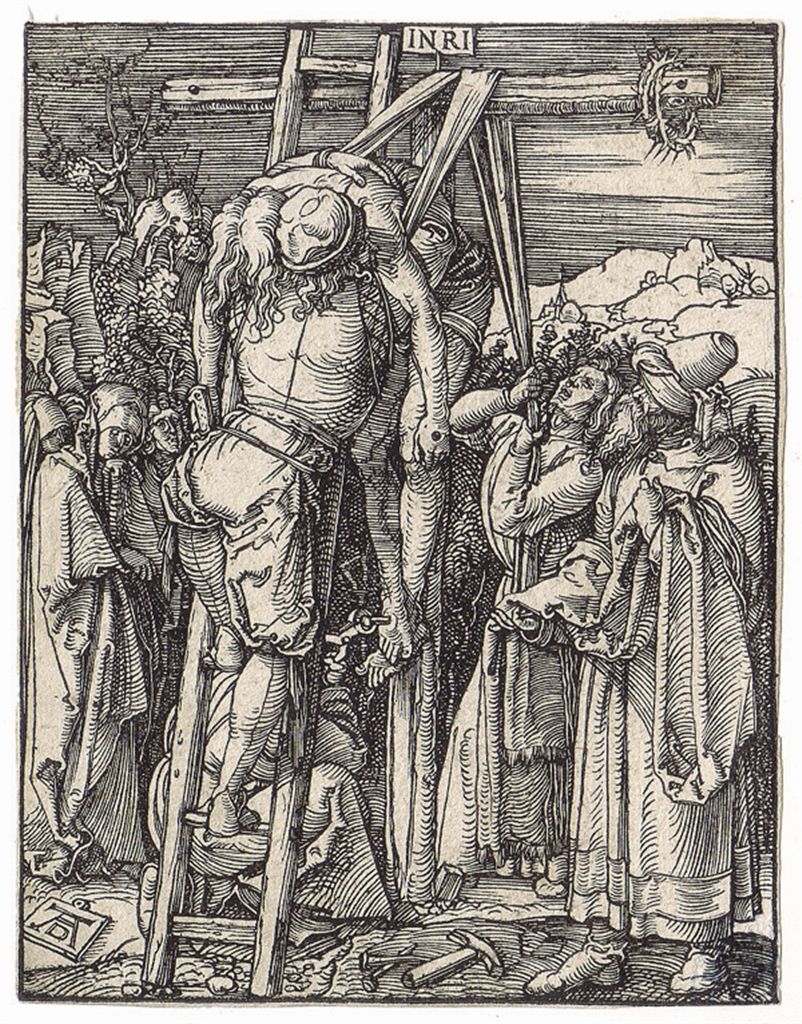Behind the Artist: Albrecht Dürer
It’s rare for an artist to master their chosen art form. It’s even rarer for an artist to completely revolutionize how one particular kind of art is made. Albrecht Dürer is one of those rare individuals—a true Renaissance man who changed the art of printmaking forever.

Albrecht Dürer (1471-1528)
Dürer’s Early Life
Born in 1471 in Nuremberg, Germany, Dürer found an interest in art at an early age under the tutelage of his father, a successful goldsmith. He later apprenticed with Michael Wolgemut, a popular artist who ran a workshop specializing in the production of woodcut illustrations for various books and publications.
Following his apprenticeship, Dürer traveled extensively throughout Europe. He first visited Italy in 1494, where he was greatly influenced by the artistic works of the Italian Renaissance, particularly the naturalistic ways artists portrayed proportion, perspective, and human anatomy.
Dürer eventually returned to Nuremberg where he opened a workshop. Just a few years later, Dürer completed an original woodcut series that would bring him his first critical and popular success—1498’s “The Apocalypse.”
It was quickly followed by two other acclaimed series—“The Large Passion” (1497-1500) and “Life of the Virgin” (c. 1501-1510)—all of which were heavily collected, spreading Dürer’s reputation as a talented artist.

“Christ Before Caiaphas” (c. 1508-1510), Albrecht Dürer, woodcut from “The Small Passion”
While Dürer would work with many different artistic media throughout his career—including engraving, oil painting, and watercolor—it was his revolutionary work with woodcuts that earned him a hallowed place in art history.
The Evolution of the Woodcut as an Art Form
Woodblock printing is one of the oldest relief printing methods in the world—the earliest examples of this method date back to 3rd-century China. The practice became common in Eastern Europe during the 15th century for use on textiles and printing on paper.
Woodcut printing involves incising—cutting away pieces of a wood block to form an image surrounded by negative spaces. Once an image is fully incised into the block, it is coated with ink and pressed against a material, often a sheet of paper.
15th-century woodcuts were basic in design until Dürer introduced new innovations that elevated printmaking to previously unimagined new heights.

“The Descent from the Cross” (c. 1508-1510), Albrecht Dürer, woodcut from “The Small Passion”
Instead of creating woodblock designs that solely incorporated thick lines, producing a flat image, Dürer’s designs integrated unheard of levels of texture. Through the addition of fine lines and subtle gradations, he proved that shadow and depth could be added to woodcut images.
In the past, woodcut prints were used to mass produce simple images—often for religious texts—which were frequently embellished with color to make them more eye-catching. However, Dürer’s new techniques finally allowed woodcut prints to be seen as works of fine art themselves. His images were nuanced, intricate, emotional, and they all told a story.
Dürer would bring both his technical skill and his knack for storytelling to his work in other artistic media as well. In fact, his choice of medium often added another layer of intention to his work. This can be seen if you compare the artist’s various Passion series, particularly in the early 16th century.
Engraved Passion
The “Passion” usually refers to the short tortuous period in Jesus Christ’s life from when he first entered Jerusalem to his eventual crucifixion. This was a very popular subject for artwork and religious materials during Dürer’s lifetime.
Between 1507 and 1513, Dürer created two versions of the Passion—one as a series of woodcut prints, the other as a series of engravings.
The “Little Passion” was his woodcut series and, while his prints had a staggering level of visual and psychological complexity, he was still limited by the amount of detail he could add to a block of wood. However, the engraving process allowed for even greater levels of detail.

“St. Anthony Reading” (1519), Albrecht Dürer, engraving. Currently on display at Park West Museum.
In his “Engraved Passion,” Dürer was able to add new layers of visual depth because the image was formed by incising lines into a durable sheet of metal. This allowed the artist to incorporate subtle variations to faces and clothing in each of the series’ 16 images, while also creating depth through the contrast of light and dark.
Additionally, Dürer understood that he could market his engravings to a different audience. Unlike woodcuts, engravings were too detailed to be mass produced by the same printing presses used for books, so Dürer treated them as standalone works.
He offered these engravings to members of the intelligentsia, or wealthier educated classes, who appreciated the lifelike quality of his work. Dürer even chose to make gifts of his “Engraved Passion” to his friends and associates.
Dürer: A Prolific Career
After receiving acclaim for his woodcuts and engravings, Dürer had an incredibly prolific career. He was in communication with his contemporaries, including Leonardo da Vinci and Raphael, and received commissions from numerous royal figures. Beginning in 1512, he was selected as the official court artist for the Roman Emperors Maximilian I and Charles V.
He continued to travel extensively but returned home to Nuremberg in 1521 after contracting a serious illness. Never fully recovering, Dürer died in his hometown in 1528.

“The Resurrection of Christ” (1510), Albrecht Dürer, woodcut from “The Large Passion.” Currently on display at Park West Museum.
Though his artistic productivity waned before his death, Dürer spent his final days writing down his theories on geometry and human anatomy. His “Four Books on Human Proportion” (1528) remained as a major art education text for years, even though Dürer himself never had a formal education.
Today, his contributions to printmaking are still lauded by historians and art lovers alike. His works are exhibited internationally in public and private collections, and his masterful prints continue to be widely collected around the globe.
The Park West Museum has a gallery of woodcuts and engravings by Albrecht Dürer currently on display.

The Albrecht Dürer gallery at Park West Museum.
If you’re interesting in collecting works by Albrecht Dürer, register for our exciting online auctions or contact our gallery consultants at (800) 521-9654 ext. 4 during business hours or sales@parkwestgallery.com after hours.





